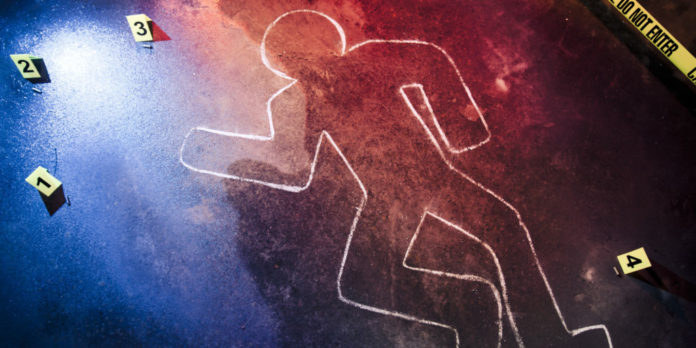With blood splatter everywhere, with open wounds all over the body, a despicable murder has taken place on the Jesuit campus. But who could commit such an atrocious crime? That is what the students enrolled in Mrs. Boyle’s forensics science course are trying to find out this December. By combining their knowledge of fingerprinting, decomposition, DNA analysis, and other methods, the students of the forensics class will attempt to find out who the perpetrator of this crime is using all the evidence they can find.
In order to prepare to solve this complex case, Mrs. Boyle said that the class “spend[s] the semester going over major topics in the course to help build [the students’] knowledge of how they would process evidence. We cover topics like decomposition, bloodstain pattern analysis, DNA analysis, fingerprinting, etc.”
Throughout the year, certain groups of students were assigned specific fields of forensics, and these groups presented to each other. Marcelo Pier ‘18 remarked that “to prepare for the final, the class divide[d] into groups and throughout the semester they [gave] a presentation about their respective discipline such as blood spatter analysis, ballistics, toxicology, etc. This helps the whole class learn the disciplines that need to be used for the final.” Because there is so much to learn in a short period of time, each group specialized in a specific topic, then shared their knowledge with the whole class.
John Jackson ‘18 said that it was important to “pay attention and understand the past units we went over because the final is applying all of those through a crime scene.” Since the final is a project, students cannot really study, but they need to apply what they learned in a real crime scene.
As for their feelings for it, the students have mixed reactions. Jackson is “pretty nervous about the final because it has proven difficult to figure out who committed the murder. You gather evidence and gain leads, then it seems like it goes nowhere. So, at the moment, I don’t know if we will solve the case.”
However, Pier feels “confident that [his] group will solve the crime.” He said that the members in his group “are all aware of the different aspects needed to solve a crime, especially a murder, which is what occurred.”
Mrs. Boyle commented that “the students always seem to get into and enjoy [the project].” When the crime was announced to the class, there were a couple of days where the boys were not really confident and then once they realized that it was challenging to figure out, “they [got] a little frustrated.” Overall, she tries to tell them that she doesn’t “grade them on if they solve the crime, but [if] they have collected a sufficient amount of evidence to help develop their story leading up to the crime that was committed.”
Even though the final project may be tough to solve, the students really enjoy the class. Pier finally stated that his “favorite part of the class was definitely the final itself.” He liked how it used all of the disciplines of forensics to solve a crime that happened at Jesuit. Similarly, Jackson also remarked that his “favorite part of the class [was] the final because we [were] using all the fields of forensics we [had] learned in order to solve a crime scene.”
So, who committed this diabolic crime? Only time will tell.






